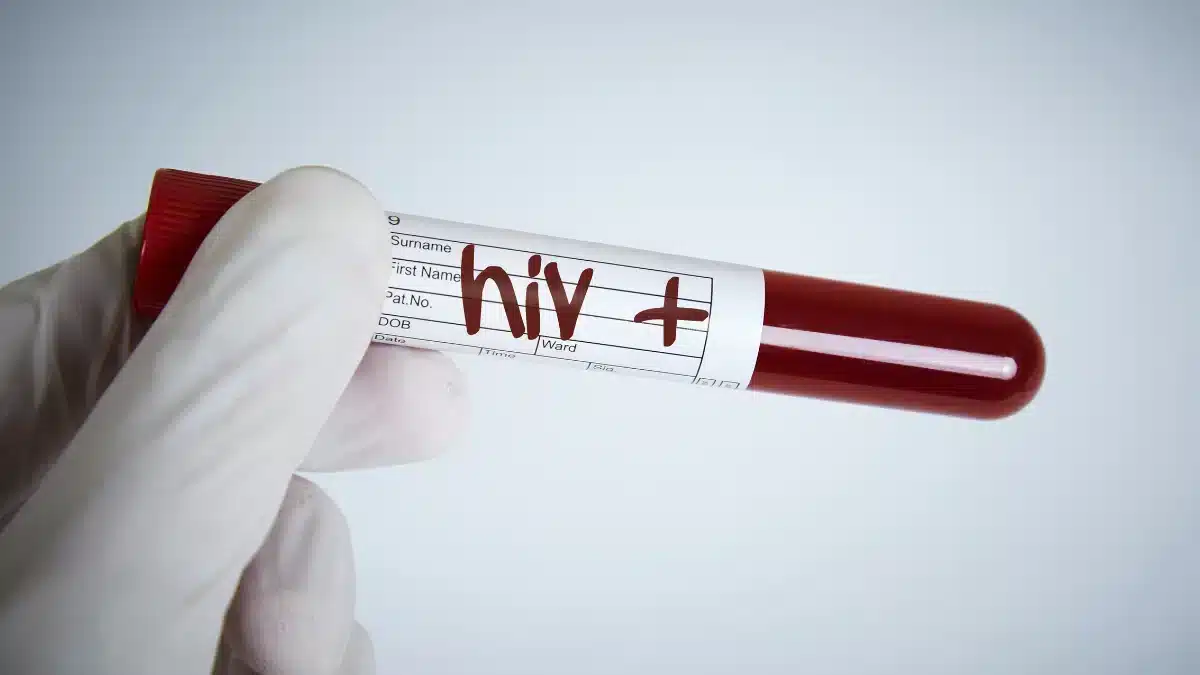Can You Get HIV in 20 Seconds: Debunking the Myth and Understanding Transmission
Human Immunodeficiency Virus (HIV) is a serious health concern that has sparked numerous misconceptions and fears over the years.
One such common concern is: “Can you get HIV in 20 seconds?”
This article seeks to explore the accuracy of this claim, drawing upon scientific research to provide a comprehensive understanding of HIV transmission.
By examining the factors influencing HIV transmission, we seek to provide clarity and foster a better understanding of the actual risks involved.
The 20-second myth
While it’s theoretically possible to acquire HIV after a single brief exposure, the statistical likelihood is low, except in instances such as blood transfusions where the risk may be higher.
The idea that HIV transmission can occur within a 20-second timeframe is not supported by scientific evidence.
Research consistently indicates that the risk of HIV transmission depends on various factors, which have been discussed in the later section of this article.
HIV is primarily transmitted through specific bodily fluids, including blood, semen, vaginal fluids, rectal fluids, and breast milk.
Transmission can occur through other sexual and non-sexual ways, too, but the chances of the same happening in a time frame of 20 seconds hold no proof.
Sexual transmission

Unprotected sexual intercourse is a common mode of HIV transmission, but the duration of exposure does not solely determine the risk.
Studies indicate that the likelihood of contracting HIV through unprotected vaginal sex with an infected person is relatively low, ranging between 0.1% and 1% per act.
The risk is comparatively higher for receptive anal intercourse but still varies widely based on the factors mentioned above.
Non-sexual transmission
Apart from sexual transmission, HIV can be transmitted through shared needles between people who inject drugs.
Additionally, mother-to-child transmission can occur during childbirth or breastfeeding.
However, these modes of transmission are distinct from the hypothetical 20-second scenario.
Factors affecting the risk of HIV transmission
Discussed below are the factors which affect your susceptibility to the infection.
Understanding these is helpful in making informed decisions and prioritizing preventive measures.
- Viral load: The viral load represents the quantity of HIV present in the bloodstream of an individual living with the virus. Higher viral loads increase the likelihood of infection
- Presence of other STIs: Co-infection with Sexually Transmitted Infections can enhance the risk of HIV transmission during unprotected sex
- Use of preventive measures: Consistent condom use and Pre-exposure Prophylaxis (PrEP) significantly reduce the risk of HIV transmission during sexual activity
- Type of exposure: Different activities carry varying transmission risks; anal intercourse poses a higher risk than vaginal intercourse, for example
- Genital sores or ulcers: Open sores increase the risk of transmission, providing direct entry points for the virus during sexual contact
Get a better understanding of tips to prevent the infection.
Preventive strategies

Effective prevention strategies for HIV include promoting safe sex practices through consistent condom use, regular testing, and counseling.
Education campaigns aimed at raising awareness about HIV transmission and dispelling myths can empower individuals to make informed choices.
Accessible healthcare services for early detection and treatment of STIs are vital.
Pre-exposure Prophylaxis (PrEP) is an effective preventive measure for individuals at high risk.
It has been seen to reduce the risk of getting HIV through sex by around 99%.
Implementing needle and syringe programs for people who inject drugs reduces transmission risks.
Combating stigma and discrimination is crucial, fostering an environment where individuals feel comfortable seeking testing, treatment, and support without fear of judgment.
Conclusion
Scientific evidence underscores that the risk of acquiring HIV in a brief timeframe is statistically improbable.
Factors influencing transmission, such as viral load and preventive measures, play pivotal roles.
Sexual and non-sexual modes of transmission underscore the importance of understanding the varied risks associated with different activities.
Implementing effective preventive strategies, including safe sex practices, regular testing, and education campaigns, is crucial.
Pre-exposure Prophylaxis (PrEP) and Post-exposure Prophylaxis (PEP) offer powerful tools for high-risk individuals, highlighting advancements in HIV prevention.
The multifaceted approach to prevention, encompassing healthcare access, stigma reduction, and targeted interventions, is paramount.
Frequently Asked Questions
How quickly can HIV be transmitted?
HIV transmission speed varies and is influenced by factors such as the type of exposure and the presence of preventive measures. Unprotected sex or sharing syringes and needles can lead to infection, but the exact timeframe is unpredictable, ranging from a single exposure to an extended period of repeated exposure.
How quick does HIV hit?
The onset of HIV symptoms varies widely. Some individuals may experience flu-like symptoms within a few weeks of infection, while others may remain asymptomatic for years. The speed at which HIV progresses to more advanced stages, including AIDS, depends on factors such as individual health, treatment, and the presence of other infections.
How quickly does HIV present itself?
HIV presentation varies; symptoms can appear within a few weeks of infection, resembling flu-like symptoms. However, many individuals may remain asymptomatic for an extended period. The virus can progress slowly, and some may not experience symptoms until years later. Regular testing is suggested for early detection and timely intervention.
What is the chance of HIV one time?
The chance of HIV transmission from a single exposure is variable and depends on factors, including the viral load of the infected person, the type of exposure, and the use of preventive measures. It is not easily quantifiable, making regular testing and safe practices crucial for minimizing risk.
WowRx uses only high-quality sources while writing our articles. Please read our content information policy to know more about how we keep our content reliable and trustworthy.






